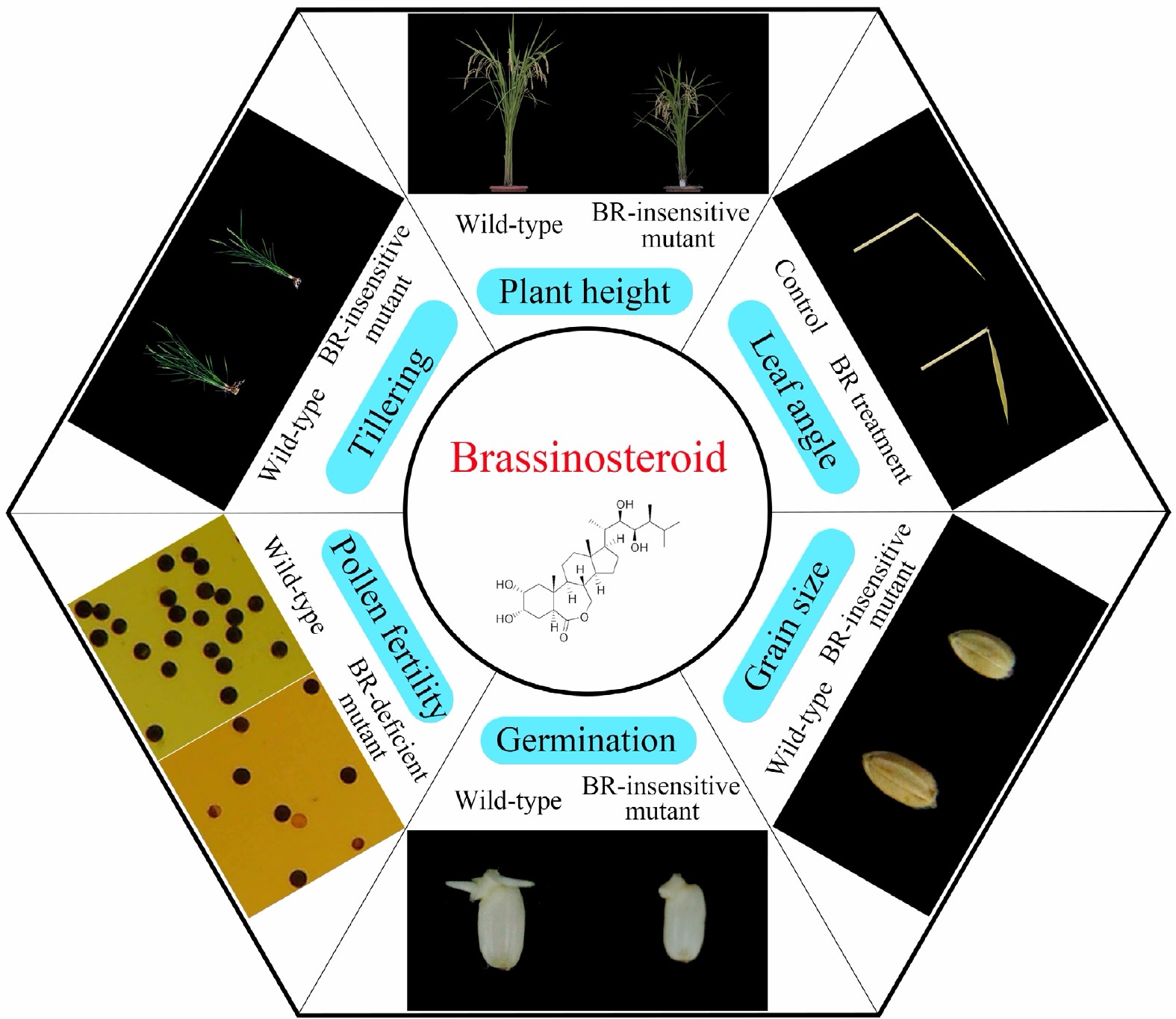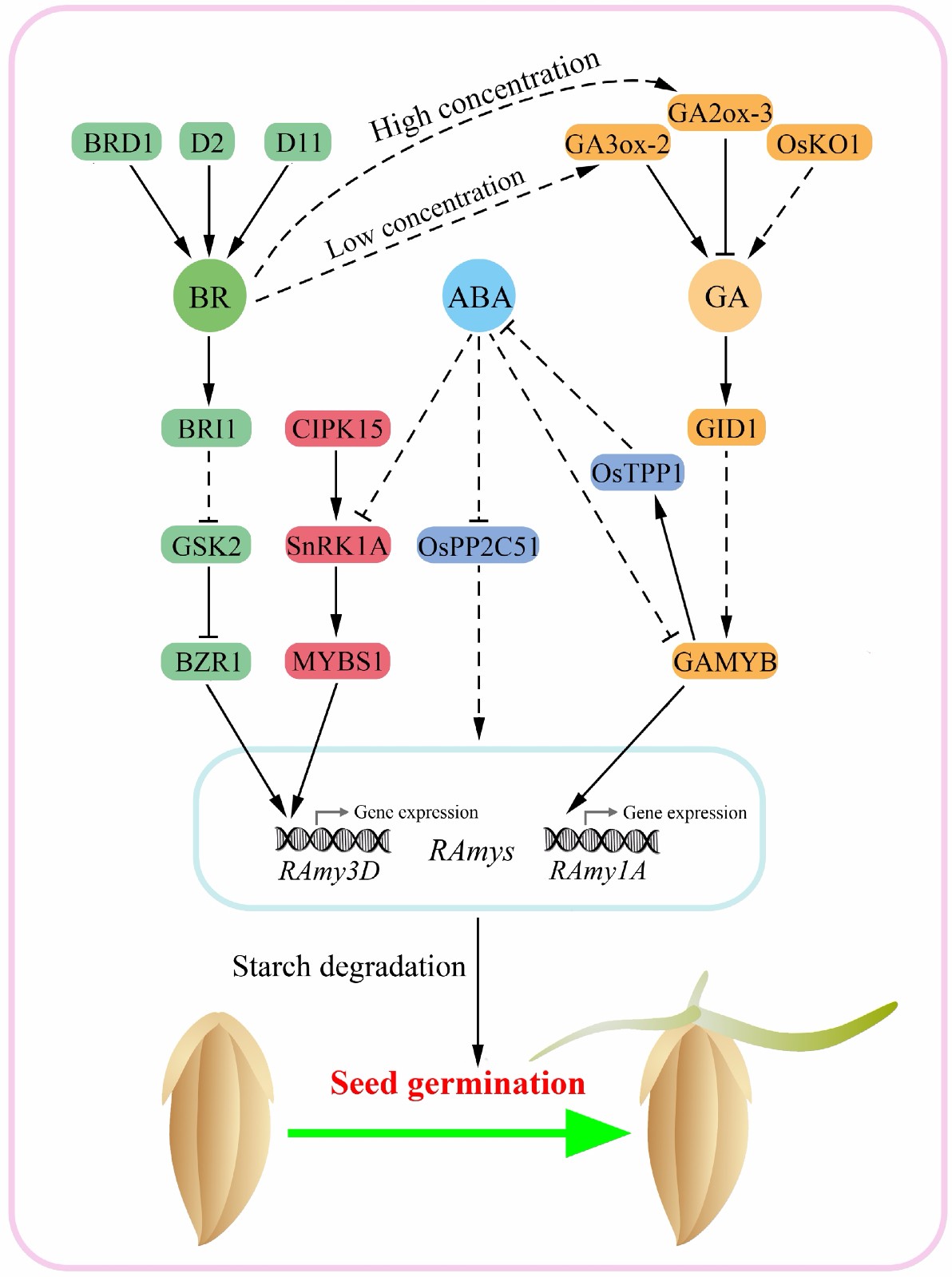-

Figure 1.
Brassinosteroid regulates a series of key agronomic traits in rice, including plant height, pollen fertility, leaf angle, tiller number, grain size and seed germination.
-

Figure 2.
Brassinosteroid (BR) regulatory networks of grain size in rice. A number of genes related to BR homeostasis and signal transduction play important roles in controlling rice grain size. Notably, GSK protein, which directly interacts with various transcription factors and functional proteins. GL, grain length; GW, grain width. Broken lines indicate indirect or multistep regulation. Arrowheads represent positive regulation.
-

Figure 3.
Molecular regulatory network of brassinosteroid (BR), GA and ABA in co-regulating starch mobilization during rice seed germination. BR regulates the transcription of RAmy3D via the BRI1-GSK2-BZR1 signaling cascade, thereby promoting starch mobilization in the seeds. Different concentrations of BR promote or inhibit GA accumulation by activating the expression of GA3ox-2 and GA2ox-3, respectively. GA promotes starch mobilization through the GAMYB-RAmy1A regulatory module, while ABA interferes with the expression of RAmy1A and RAmy3D by inhibiting the activity of GAMYB in the GA pathway and SnRK1A in the sugar starvation pathway. In addition, ABA down-regulates α-amylase activity through OsPP2C51 via its own signaling pathway. Broken lines indicate indirect or multistep regulation. Arrowheads represent positive regulation.
Figures
(3)
Tables
(0)